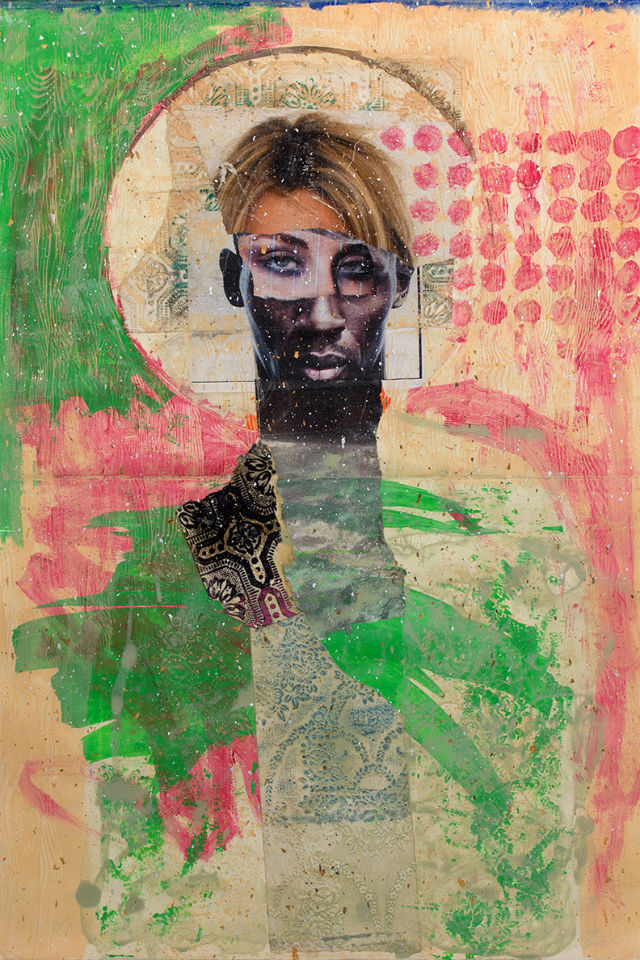Multilayered Meaning in Rodriguez Calero

When pop culture icons become a source of worship, when we look to fashion magazines for personal guidance, what does it say about where we put our faith? In Urban Martyrs and Latter Day Santos, on view at New York’s El Museo del Barrio through December 19th, artist Rodriguez Calero fuses hip-hop sensibility with the Catholic iconography of her childhood, casting a modern, multilayered look at who and what we revere today.

Created over a span of 20 years, the works on display employ a variety of collage and painting techniques, including Calero’s unique fotacrolé and acrollage processes. She describes acrollage, her signature technique, as a process whereby acrylic paint and medium are “turned into plastic skins and collaged into layers of veiled colors, stenciled patterns, rice paper and gold leaf.”
Although her various processes are complex and highly thoughtful, she says her decisions on when to employ one technique over another (she also uses photography), are largely intuitive. “I do not make project decisions,” she said. “I just want or need to create. I try not to limit myself, so the thought process is non-pensive, the action is fluid, and fearless to permit the use of all within my grasp.”

A current resident of New Jersey, Calero was born in Puerto Rico, raised in New York, and returned to Puerto Rico to study at the Escuela de Artes Plásticas. This mix of cultures—something of a collage in and of itself—is often channeled through the imagery of her artwork. “I am defined but not limited to being a Nuyorican, and embrace all that is an extension of my heritage and beliefs,” said Calero. “I gather inner strengths from our never-ending struggles that we deal with as a people and as an individual.”

Indeed, she cites culture, along with intuition and integrity, as three of her most important tools as an artist. Yet through the arts, she hopes these struggles and differences—whether cultural, political, religious, or otherwise—can be transcended, and we can instead rediscover our common humanity. “The arts matter because they are primal, and probably the one thing that resonates in all of us,” she said. “Art permits us to understand and express our unconscious experiences and touch upon one’s emotions. It is the continued creation of the world and decisive moment that permits us to unite as one.”




